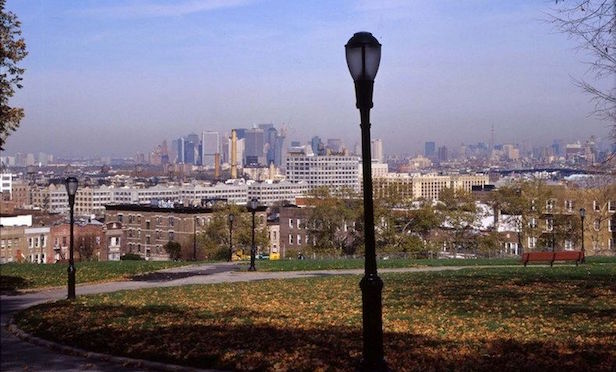 Sunset Park in Brooklyn tops the list for edgy retail districts, all in North American cities.
Sunset Park in Brooklyn tops the list for edgy retail districts, all in North American cities.
NEW YORK CITY—At the moment, the edgiest retail corridor in North America is Brooklyn’s Sunset Park neighborhood, according to Cushman & Wakefield’s first-ever Cool Streets report. It’s the ne plus ultra of retail cool in mid-2016, heading a roster that also includes Los Angeles’ Silver Lake district, Wynwood in Miami, West Queen West in Toronto and Over-the-Rhine in Cincinnati, along with 10 others that the report spotlights.
No two of these streets are quite the same. “If there’s one common thread running through these neighborhoods, it’s that each has a character,” Gene Spiegelman, vice chairman and head of North American retail services with Cushman & Wakefield, tells GlobeSt.com. “Each has a character and history that’s unique.
“And I think what got lost over the past two-and-a-half decades of shopping center and lifestyle development is that you were trying to create character,” he continues. “Sometimes it was successfully done, and other times not. It’s very hard to create character when you take a cornfield and turn it into a shopping center. But when you take a 100-year-old brewery and convert it into something new and fresh, that’s character. And it resonates.”
The evolution of these neighborhoods into the corridors they are today has occurred very much on a case-by-case basis. Likewise, although the report charts a continuum from “Edgy Cool” at one of the spectrum to “Gone Mainstream” at the other, “It’s not universal that every market will jump from cool, hip, novel and new to being saturated with name brands,” says Spiegelman. “It’s not necessarily going to happen everywhere.”
The genesis of the report, he says, was a conversation among the firm’s retail team “where we just trying to identify what was happening on a broader retail perspective. The subject of hip, cool streets came up; there was an initial list developed and we got so much positive feedback on it that we realized there was something here for a report. Even for us, this was a voyage of discovery.”
Many industry observers would look at the report and be unfamiliar with a great many of the neighborhoods spotlighted in the report. “A retailer will look at it and say, ‘this is a great road map,’ ” says Spiegelman. “An investor will look at it and say, ‘this is great; let me see where the trend lines are.’”
The main trend line running through the development of these “cool streets” is urbanization: “people moving out of the suburbs and back into cities,” Spiegelman says. It’s no coincidence that in each of the 15 coolest neighborhoods identified by Cushman & Wakefield, Millennials comprise at least 26% of the population. In the case of Toronto’s West Queen West district, the Millennial representation is more than 75%.
Four decades ago, a song by Tower of Power asked the musical question, “What is hip?” That elusive quality is no easier to define today. “For economists or real estate analysts who usually strive to work in the realm of numbers and hard data, answering the question ‘what is cool?’ almost seems frivolous,” according to the report, prepared by Garrick Brown, VP of retail research. “Except that it is not. In fact, for retail the stakes couldn’t be higher. Ignore cool at your own peril.”
There’s an element of risk for a retailer seeking to branch out into edgier retail districts: the timing may not seem right, or the retailer’s product mix might not seem like an ideal fit. But Spiegelman says, “You have to be a leader. Most retailers are followers. They like to congregate and utilize the benefits of co-tenancy, understand what the existing sales are and what the trend line is. If you’re the trendsetter, you get to benefit the most.”

















 Copyright © 2024 ALM Global, LLC. All Rights Reserved.
Copyright © 2024 ALM Global, LLC. All Rights Reserved.